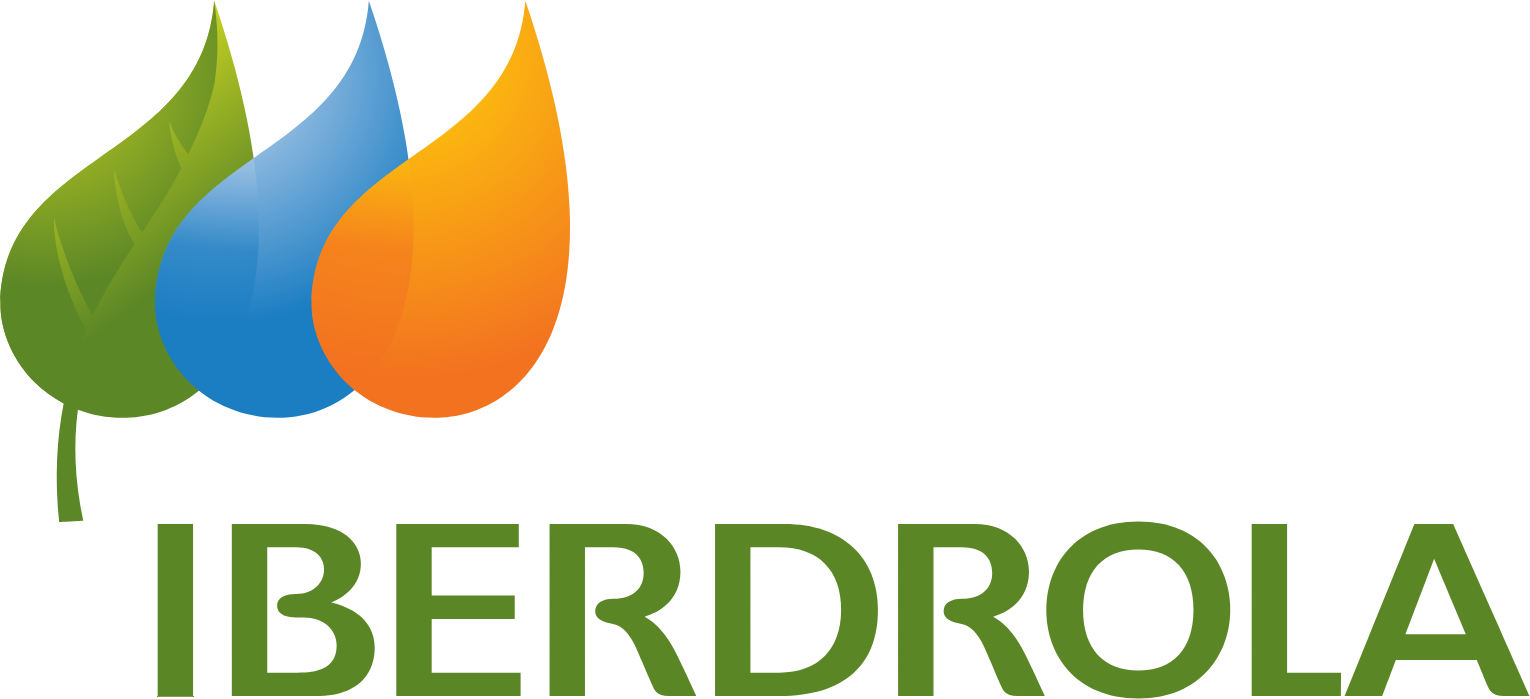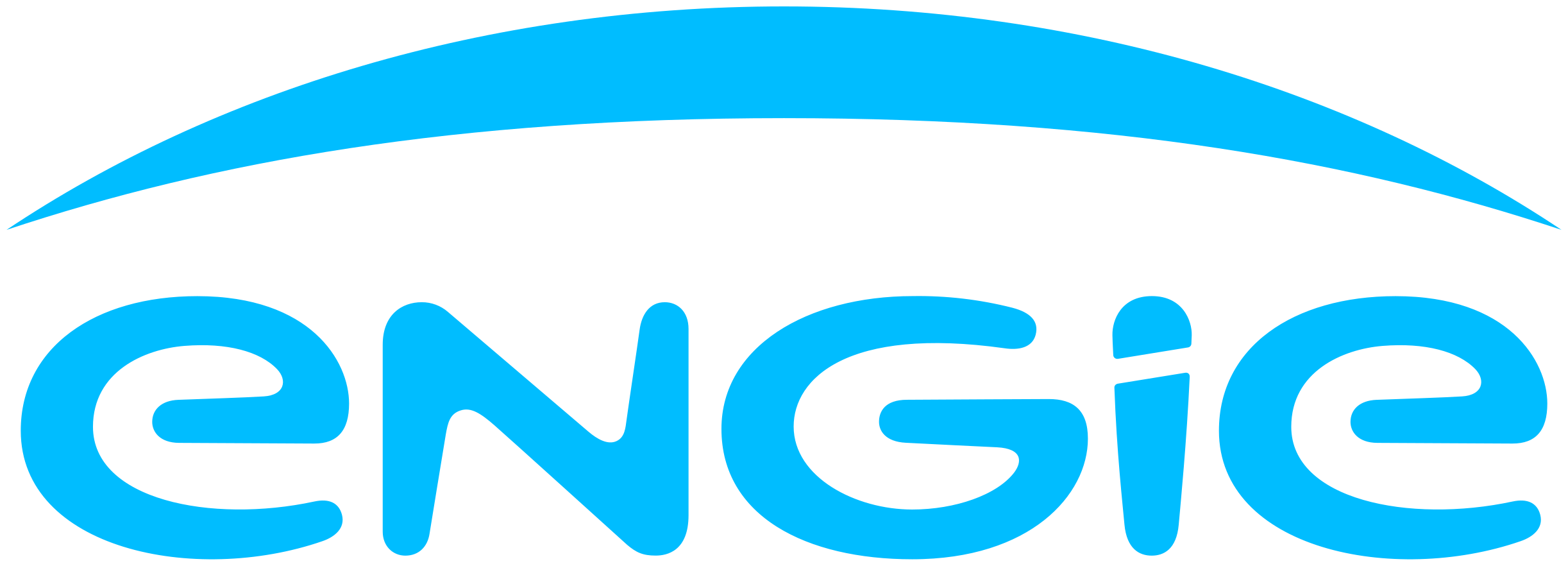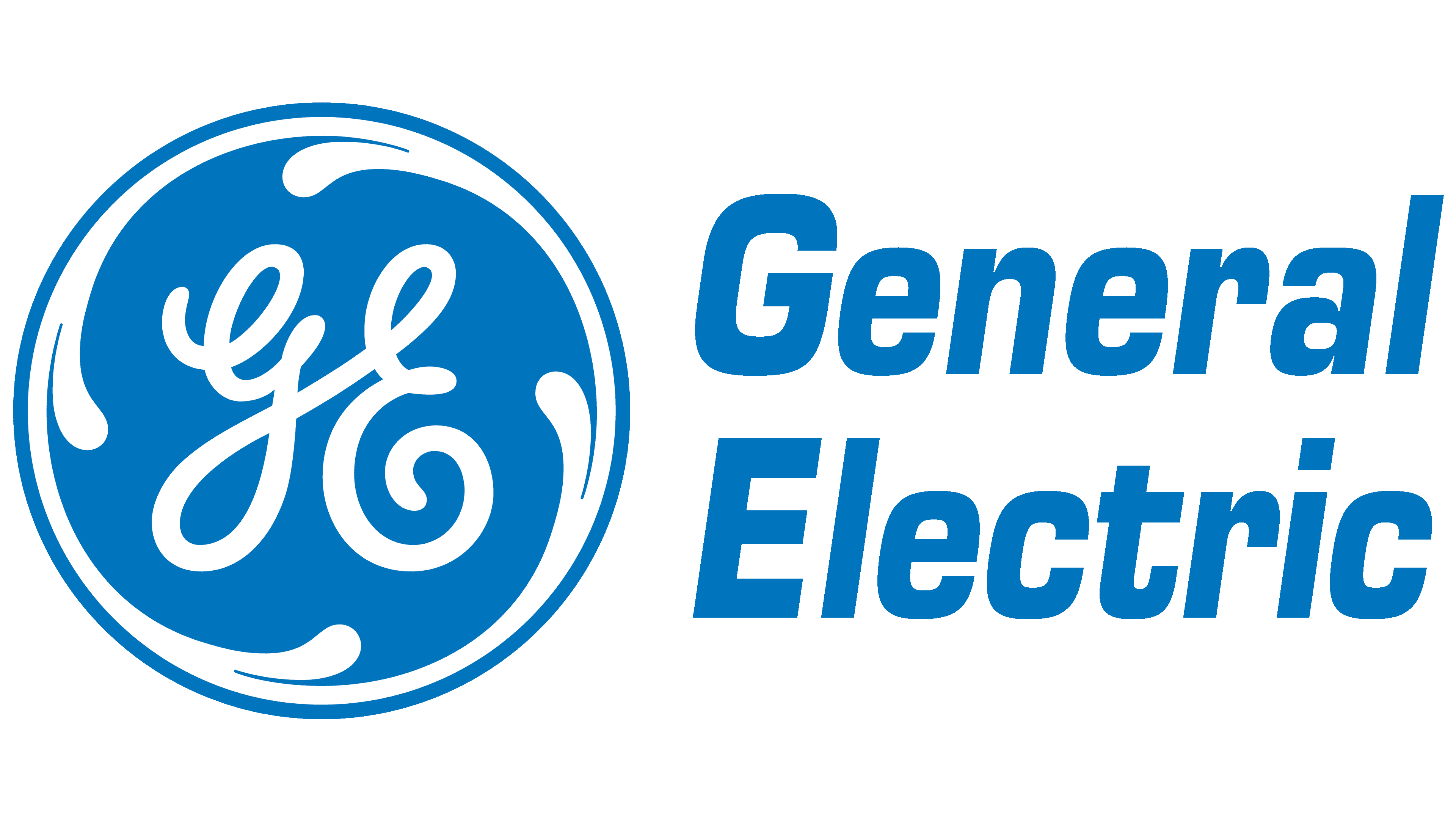Global Climate Technology Market By Component, By Technology, By Application, By Region & Segmental Insights Trends and Forecast, 2024 – 2034
- Industry: Energy & Power
- Report ID: TNR-110-1316
- Number of Pages: 420
- Table/Charts : Yes
- September, 2024
- Base Year : 2024
- No. of Companies : 10+
- No. of Countries : 29
- Views : 10069
- Covid Impact Covered: Yes
- War Impact Covered: Yes
- Formats : PDF, Excel, PPT
Climate technology encompasses innovations that mitigate climate change by reducing carbon emissions and enhancing sustainability. These technologies span sectors such as energy, agriculture, transportation, and industry. For instance, solar power systems (widely used since the early 2000s) are now integral to residential and industrial energy supply, reducing reliance on fossil fuels. In transportation, electric vehicles like Tesla (first released in 2008) are pivotal in lowering greenhouse gas emissions.
In agriculture, precision farming technologies, such as John Deere’s GPS-enabled tractors (launched in 1997), help reduce waste by optimizing resource usage. These innovations are not only essential for sustainable practices but also contribute to daily life by ensuring cleaner air and more efficient energy consumption. Climate technology is critical to protecting the environment while meeting global energy and sustainability needs. “In terms of revenue, the global climate technology market was worth US$ 21.6 Bn in 2023, anticipated to witness a CAGR of 23.7% during 2024 – 2034”.
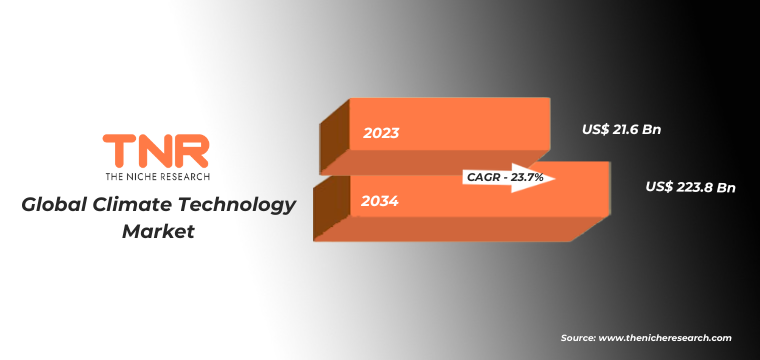
Climate Tech VC Funding By Region:
In recent years, Climate Tech VC funding has shown significant regional variations. The USA remains a leader, attracting substantial investments, particularly in clean energy and electric vehicles, with over $20 billion in 2021 alone. China follows, investing heavily in renewable energy technologies, notably solar and wind, reflecting its commitment to carbon neutrality by 2060.
Europe is also active, emphasizing sustainable agriculture and carbon capture, with countries like Germany and the UK driving innovation. India is rapidly increasing its funding in clean technology, focusing on energy efficiency and sustainable agriculture. The Rest of the World (RoW), including regions like Africa and Latin America, is gradually gaining traction, driven by local climate initiatives and renewable projects.
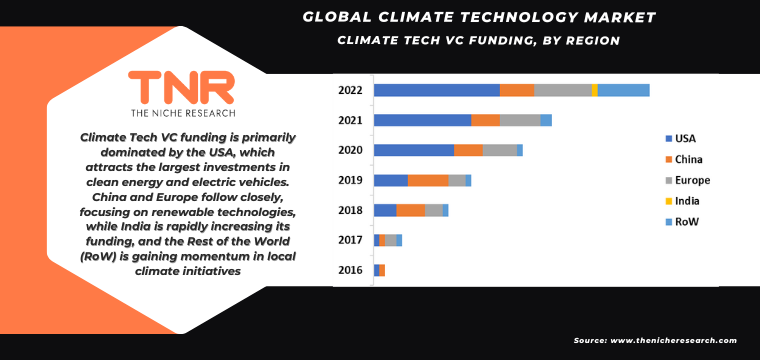
Global Climate Technology Market Dynamics
Global Climate Technology Market Growth Drivers:
- Government Policies and Incentives: Governments worldwide are driving the climate technology market through policies and incentives. For example, the U.S. Inflation Reduction Act (2022) provides tax credits for renewable energy projects, boosting investment in solar and wind energy. Similarly, Germany’s Renewable Energy Act (first enacted in 2000) promoted the expansion of wind and solar technologies, making the country a leader in green energy adoption.
- Corporate Sustainability Initiatives: Corporations are increasingly adopting climate technologies to meet sustainability goals. For instance, Microsoft’s 2020 pledge to become carbon negative by 2030 has accelerated investments in carbon capture and renewable energy. Similarly, IKEA’s commitment to 100% renewable energy (announced in 2012) drives growth in solar and wind technology, aligning business operations with climate goals.
Global Climate Technology Market Restraints:
- High Initial Costs: The high upfront costs of implementing climate technologies, such as solar panel installations or electric vehicle infrastructure, can be a significant barrier. For example, despite long-term savings, installing residential solar systems remains expensive, with average costs in the U.S. still around $20,000 (as of 2023), limiting widespread adoption.
- Technological Limitations: Some climate technologies face challenges in scalability and efficiency. For instance, energy storage systems, like lithium-ion batteries, struggle with limited capacity and recycling difficulties. Although Tesla’s Powerwall (released in 2015) advanced home energy storage, battery efficiency and lifespan still restrict large-scale renewable energy integration, hindering the technology’s full potential.
Global Climate Technology Market Opportunities:
- Emerging Markets Adoption: Emerging economies are rapidly adopting climate technologies to meet growing energy demands sustainably. For instance, India’s National Solar Mission (launched in 2010) aims to install 100 GW of solar power by 2022, creating vast opportunities for solar panel manufacturers and renewable energy companies expanding into new regions.
- Innovation in Energy Storage: Advancements in energy storage technologies present significant opportunities. For example, solid-state batteries, which are more efficient than traditional lithium-ion batteries, are being developed for electric vehicles. Toyota’s 2021 investment in solid-state battery research aims to commercialize them by 2025, offering better energy storage solutions that can transform renewable energy systems globally.
Global Climate Technology Market Trends:
- Expansion of Electric Vehicles (EVs): The adoption of electric vehicles (EVs) is accelerating globally. In 2023, Tesla and other manufacturers expanded their EV offerings, pushing toward mass-market acceptance. Governments, like the EU’s 2035 ban on new internal combustion engine sales, further drive this trend, promoting cleaner transportation technologies.
- Growth in Carbon Capture Technologies: Carbon capture and storage (CCS) technologies are gaining momentum as industries aim to reduce emissions. For instance, Occidental Petroleum’s 2022 partnership to build the world’s largest direct air capture plant in Texas highlights the rising demand for CCS, driven by corporate and governmental climate commitments.
Global Climate Technology Market Segmental Analysis:
Climate Technology Market By Component
- Solution
- Services
- Consulting
- Integration and Deployment
- Support and Maintenance
- Others
In 2023, the solutions segment led the global climate technology market with a significant 56.8% revenue share, driven by increasing demand for renewable energy, energy-efficient technologies, and carbon management systems. Companies like Siemens and GE Renewable Energy expanded their renewable energy solutions, including wind turbines and grid management systems. For example, Siemens’ smart grid technology (2022) enhanced energy efficiency, reducing carbon footprints in industrial sectors. Similarly, Enel Green Power expanded its solar and wind farm solutions worldwide, reflecting the growing adoption of integrated climate solutions in mitigating environmental impacts across various industries.
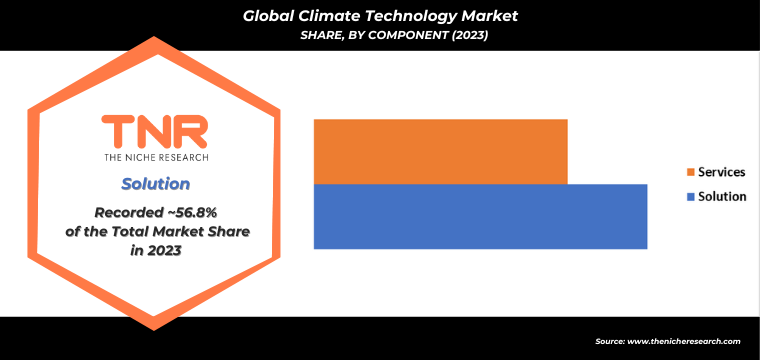
Climate Technology Market By Technology
- IoT
- AI and Analytics
- Digital Twin
- Cloud Computing
- Security
- Blockchain
Cloud computing segment is projected to be the fastest-growing segment in the global climate technology market, capturing a notable revenue share of 22.4%. Cloud-based solutions are increasingly adopted for managing renewable energy grids, carbon tracking, and data analysis. For instance, Microsoft’s Azure offers cloud services that help businesses track and reduce carbon emissions, as part of its Sustainability Calculator launched in 2020. Similarly, Amazon Web Services (AWS) supports energy companies with climate data processing, enhancing efficiency in renewable energy projects. These cloud platforms provide scalable, energy-efficient tools, aiding in real-time environmental monitoring and contributing to climate change mitigation.
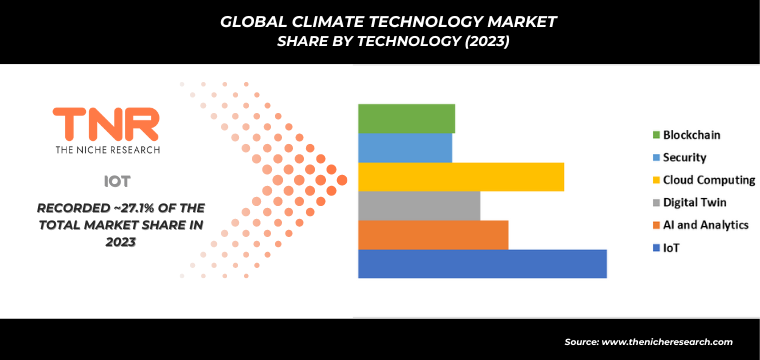
Climate Technology Market By Application
- Carbon Footprint Management
- Green Building
- Weather Monitoring and Forecasting
- Soil Condition/Moisture Monitoring
- Energy Storage
- Water Purification
- Crop Monitoring
- Forest Monitoring
- Sustainable Mining and Exploration
- Air and Water Pollution Monitoring
- Others
Carbon footprint management dominated the global climate technology market in 2023, commanding a significant revenue share of 14.6%. As businesses focus on sustainability, carbon management solutions help track, reduce, and offset emissions. For example, Salesforce’s Net Zero Cloud, launched in 2021, allows companies to monitor their carbon footprint and achieve net-zero goals. Similarly, Accenture’s carbon intelligence solutions enable industries to optimize energy use and reduce emissions. These tools are crucial for sectors like manufacturing and transportation, where emissions monitoring is critical. Companies increasingly integrate such technologies to comply with regulatory standards and meet sustainability commitments, driving growth in this segment.
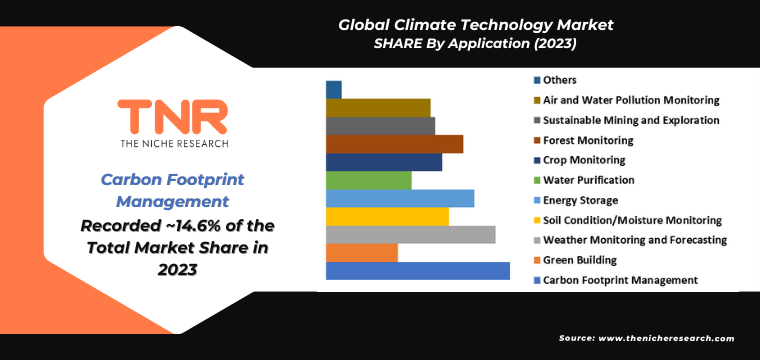
Climate Technology Market By Region
- North America (U.S., Canada, Mexico, Rest of North America)
- Europe (France, The UK, Spain, Germany, Italy, Nordic Countries (Denmark, Finland, Iceland, Sweden, Norway), Benelux Union (Belgium, The Netherlands, Luxembourg), Rest of Europe)
- Asia Pacific (China, Japan, India, New Zealand, Australia, South Korea, Southeast Asia (Indonesia, Thailand, Malaysia, Singapore, Rest of Southeast Asia), Rest of Asia Pacific)
- Middle East & Africa (Saudi Arabia, UAE, Egypt, Kuwait, South Africa, Rest of Middle East & Africa)
- Latin America (Brazil, Argentina, Rest of Latin America)
Middle East & Africa is projected to be the fastest-growing region in the climate technology market during the forecast period, driven by increased investments in renewable energy and sustainability initiatives. For example, the United Arab Emirates’ Masdar City (established in 2006) is a leading model for sustainable urban development, incorporating solar energy and low-carbon infrastructure. Similarly, Saudi Arabia’s NEOM project (launched in 2017) emphasizes clean energy through wind and solar power. In Africa, countries like South Africa and Morocco are investing heavily in solar farms, such as Morocco’s Noor Solar Complex (one of the world’s largest), further accelerating regional growth in climate technology adoption.
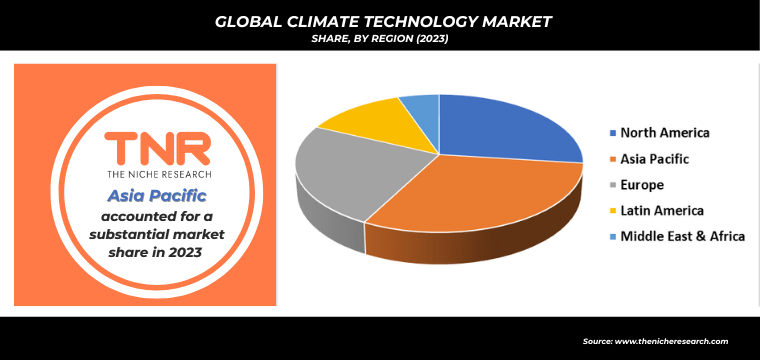
Competitive Landscape
Key players in the global climate technology market are driving innovations to combat climate change. Tesla continues to innovate with its solar roof (introduced in 2017), integrating energy generation with modern aesthetics. Siemens launched its smart grid technology in 2022, improving energy efficiency in urban settings.
Similarly, General Electric (GE) is advancing its Haliade-X wind turbine (first launched in 2019), one of the world’s largest, producing clean energy on a massive scale. Microsoft’s AI-driven Sustainability Calculator (launched in 2020) helps businesses monitor and reduce their carbon footprints. These innovations highlight manufacturers’ focus on new technologies to boost renewable energy adoption and sustainability across industries.
- In January 2023, during Abu Dhabi Sustainability Week’s World Future Energy Summit, the Mohamed bin Zayed University of Artificial Intelligence (MBZUAI) launched the AI Center of Excellence in collaboration with IBM. This Center aims to advance the use of AI technology in sustainability efforts, focusing on developing eco-friendly solutions for existing energy sources and addressing climate change.
- In June 2022, Swiss start-up Climeworks AG announced plans to build its second large-scale direct air capture (DAC) facility within the next 18 to 24 months. This plant is expected to capture approximately 36,000 tons of carbon dioxide from the atmosphere annually.
- In January 2020, GE Hitachi Nuclear Energy partnered with TerraPower to design and construct a new Versatile Test Reactor (VTR) program for the U.S. Department of Energy (DOE). Their collaboration leverages their combined expertise in sodium reactor technology, creating a highly skilled team of engineers and scientists.
Global Climate Technology Market Scope:
| Report Specifications | Details |
| Market Revenue in 2023 | US$ 21.6 Bn |
| Market Size Forecast by 2034 | US$ 223.8 Bn |
| Growth Rate (CAGR) | 23.7% |
| Historic Data | 2016 – 2022 |
| Base Year for Estimation | 2023 |
| Forecast Period | 2024 – 2034 |
| Report Inclusions | Market Size & Estimates, Market Dynamics, Competitive Scenario, Trends, Growth Factors, Market Determinants, Key Investment Segmentation, Product/Service/Solutions Benchmarking |
| Segments Covered | By Component, By Technology, By Application, By Region |
| Regions Covered | North America, Europe, Asia Pacific, Middle East & Africa, Latin America |
| Countries Covered | U.S., Canada, Mexico, Rest of North America, France, The UK, Spain, Germany, Italy, Nordic Countries (Denmark, Finland, Iceland, Sweden, Norway), Benelux Union (Belgium, The Netherlands, Luxembourg), Rest of Europe, China, Japan, India, New Zealand, Australia, South Korea, Southeast Asia (Indonesia, Thailand, Malaysia, Singapore, Rest of Southeast Asia), Rest of Asia Pacific, Saudi Arabia, UAE, Egypt, Kuwait, South Africa, Rest of Middle East & Africa, Brazil, Argentina, Rest of Latin America |
| Key Players | Consensys, Cropx, Enablon, Engie Impact, Enviance, GE, Hortau, IBM, Intelex, Isometrix, Lo3 Energy, Microsoft, Salesforce, Schneider Electric, Sensus, Taranis, Trace Genomics |
| Customization Scope | Customization allows for the inclusion/modification of content pertaining to geographical regions, countries, and specific market segments. |
| Pricing & Procurement Options | Explore purchase options tailored to your specific research requirements |
| Contact Details | Consult With Our Expert
Japan (Toll-Free): +81 663-386-8111 South Korea (Toll-Free): +82-808- 703-126 Saudi Arabia (Toll-Free): +966 800-850-1643 United Kingdom: +44 753-710-5080 United States: +1 302-232-5106 E-mail: askanexpert@thenicheresearch.com
|
Some of the players operating in the climate technology market are
- Consensys
- Cropx
- Enablon
- Engie Impact
- Enviance
- GE
- Hortau
- IBM
- Intelex
- Isometrix
- Lo3 Energy
- Microsoft
- Salesforce
- Schneider Electric
- Sensus
- Taranis
- Trace Genomics
- Other Industry Participants
Report Layout:
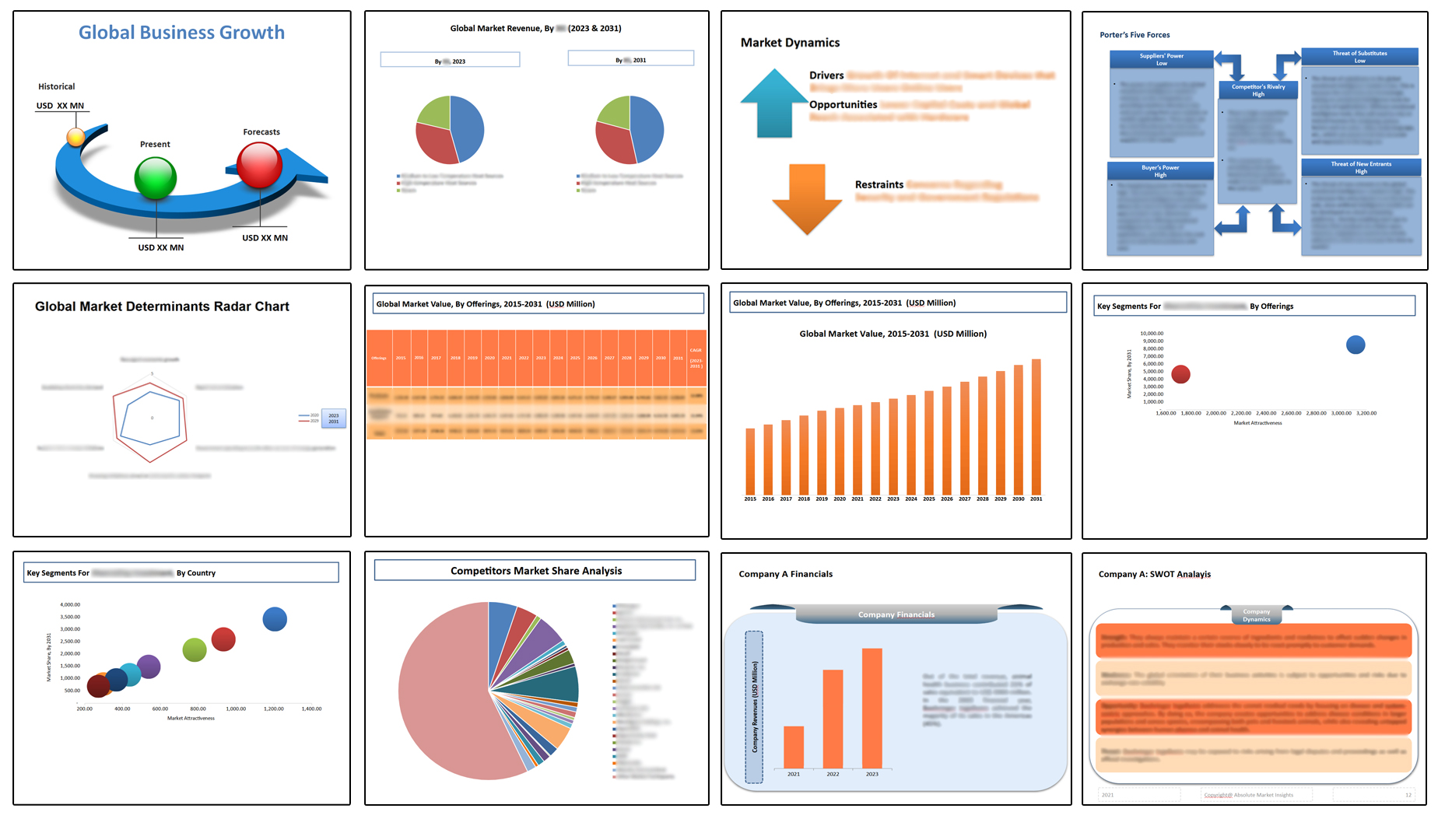
Table of Contents
Note: This ToC is tentative and can be changed according to the research study conducted during the course of report completion.
**Exclusive for Multi-User and Enterprise User.
Global Climate Technology Market:
By Component
- Solution
- Services
- Consulting
- Integration and Deployment
- Support and Maintenance
- Others
By Technology
- IoT
- AI and Analytics
- Digital Twin
- Cloud Computing
- Security
- Blockchain
By Application
- Carbon Footprint Management
- Green Building
- Weather Monitoring and Forecasting
- Soil Condition/Moisture Monitoring
- Energy Storage
- Water Purification
- Crop Monitoring
- Forest Monitoring
- Sustainable Mining and Exploration
- Air and Water Pollution Monitoring
- Others
By Region
- North America
- S.
- Canada
- Mexico
- Rest of North America
- Europe
- France
- The UK
- Spain
- Germany
- Italy
- Nordic Countries
- Denmark
- Finland
- Iceland
- Sweden
- Norway
- Benelux Union
- Belgium
- The Netherlands
- Luxembourg
- Rest of Europe
- Asia Pacific
- China
- Japan
- India
- New Zealand
- Australia
- South Korea
- Southeast Asia
- Indonesia
- Thailand
- Malaysia
- Singapore
- Rest of Southeast Asia
- Rest of Asia Pacific
- Middle East & Africa
- Saudi Arabia
- UAE
- Egypt
- Kuwait
- South Africa
- Rest of Middle East & Africa
- Latin America
- Brazil
- Argentina
- Rest of Latin America
The Niche Research approach encompasses both primary and secondary research methods to provide comprehensive insights. While primary research is the cornerstone of our studies, we also incorporate secondary research sources such as company annual reports, premium industry databases, press releases, industry journals, and white papers.
Within our primary research, we actively engage with various industry stakeholders, conducting paid interviews and surveys. Our meticulous analysis extends to every market participant in major countries, allowing us to thoroughly examine their portfolios, calculate market shares, and segment revenues.
Our data collection primarily focuses on individual countries within our research scope, enabling us to estimate regional market sizes. Typically, we employ a bottom-up approach, meticulously tracking trends in different countries. We analyze growth drivers, constraints, technological innovations, and opportunities for each country, ultimately arriving at regional figures.Our process begins by examining the growth prospects of each country. Building upon these insights, we project growth and trends for the entire region. Finally, we utilize our proprietary model to refine estimations and forecasts.
Our data validation standards are integral to ensuring the reliability and accuracy of our research findings. Here’s a breakdown of our data validation processes and the stakeholders we engage with during our primary research:
- Supply Side Analysis: We initiate a supply side analysis by directly contacting market participants, through telephonic interviews and questionnaires containing both open-ended and close-ended questions. We gather information on their portfolios, segment revenues, developments, and growth strategies.
- Demand Side Analysis: To gain insights into adoption trends and consumer preferences, we reach out to target customers and users (non-vendors). This information forms a vital part of the qualitative analysis section of our reports, covering market dynamics, adoption trends, consumer behavior, spending patterns, and other related aspects.
- Consultant Insights: We tap into the expertise of our partner consultants from around the world to obtain their unique viewpoints and perspectives. Their insights contribute to a well-rounded understanding of the markets under investigation.
- In-House Validation: To ensure data accuracy and reliability, we conduct cross-validation of data points and information through our in-house team of consultants and utilize advanced data modeling tools for thorough verification.
The forecasts we provide are based on a comprehensive assessment of various factors, including:
- Market Trends and Past Performance (Last Five Years): We accurately analyze market trends and performance data from preceding five years to identify historical patterns and understand the market’s evolution.
- Historical Performance and Growth of Market Participants: We assess the historical performance and growth trajectories of key market participants. This analysis provides insights into the competitive landscape and individual company strategies.
- Market Determinants Impact Analysis (Next Eight Years): We conduct a rigorous analysis of the factors that are projected to influence the market over the next eight years. This includes assessing both internal and external determinants that can shape market dynamics.
- Drivers and Challenges for the Forecast Period:Identify the factors expected to drive market growth during the forecast period, as well as the challenges that the industry may face. This analysis aids in deriving an accurate growth rate projection.
- New Acquisitions, Collaborations, or Partnerships: We keep a close watch on any new acquisitions, collaborations, or partnerships within the industry. These developments can have a significant impact on market dynamics and competitiveness.
- Macro and Micro Factors Analysis:A thorough examination of both macro-level factors (e.g., economic trends, regulatory changes) and micro-level factors (e.g., technological advancements, consumer preferences) that may influence the market during the forecast period.
- End-User Sentiment Analysis: To understand the market from the end-user perspective, we conduct sentiment analysis. This involves assessing the sentiment, preferences, and feedback of the end-users, which can provide valuable insights into market trends.
- Perspective of Primary Participants: Insights gathered directly from primary research participants play a crucial role in shaping our forecasts. Their perspectives and experiences provide valuable qualitative data.
- Year-on-Year Growth Trend: We utilize a year-on-year growth trend based on historical market growth and expected future trends. This helps in formulating our growth projections, aligning them with the market’s historical performance.
Research process adopted by TNR involves multiple stages, including data collection, validation, quality checks, and presentation. It’s crucial that the data and information we provide add value to your existing market understanding and expertise. We have also established partnerships with business consulting, research, and survey organizations across regions and globally to collaborate on regional analysis and data validation, ensuring the highest level of accuracy and reliability in our reports.
